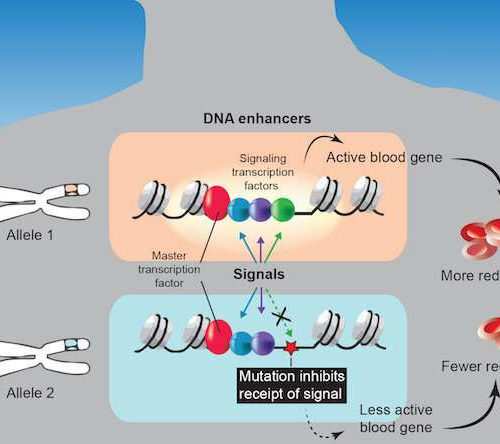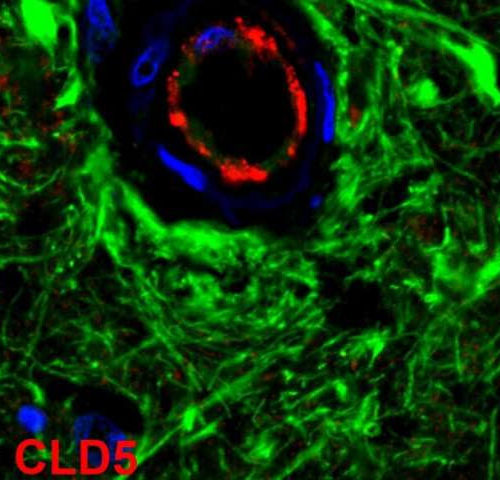by Massachusetts General Hospital Credit: CC0 Public Domain Patients with tuberous sclerosis complex, a genetic disorder characterized by the growth of noncancerous tumors in multiple organs of the body, have limited treatment options. A team led by investigators at Massachusetts General Hospital (MGH) has now shown that gene therapy can effectively treat mice that express one...
Category: <span>Genetics</span>
DNA discovery could advance degenerative disease treatments
by Dr Steven Magennis, University of Glasgow Credit: Pixabay/CC0 Public Domain New research on the structure and dynamics of a branched form of DNA called a three-way junction could lead to more effectively targeted treatments for degenerative disorders like Huntington’s Disease, scientists say. In a new paper published in the journal Nature Communications, chemists from the University of Glasgow...
Identical twins aren’t perfect clones, research shows
by Christina Larson In this Saturday, June 18, 2005 file photo, identical twins Alf, left, and Sven Fehnhanhn, left background, 79, from Kassel, pose along with seven-month-old Luis Carl, right, und Albert Frank Millgramm, right background, during a twins’ meeting in Berlin. According to research published on Thursday, Jan. 7, 2021, identical twins are not exactly genetically...
CRISPR cures progeria in mice, raising hope for one-time therapy for a disease that causes rapid aging
By SHARON BEGLEY JANUARY 6, 2021 Magali Gonzalez Sierra, who has progeria, prepares for her 15th birthday party in El Cabuyal, Colombia. Children with the genetic disease age prematurely and typically die around age 14.LUIS ROBAYO/AFP/GETTY IMAGES Biologists tend not to discuss experimental results on a handful of cells and a single solitary mouse —...
Study resolves long-running controversy over critical step in gene silencing
MASSACHUSETTS GENERAL HOSPITAL BOSTON – A long-running debate over how an important gene-silencing protein identifies its targets has been resolved by researchers at Massachusetts General Hospital (MGH). Their findings, reported in Nature Structural and Molecular Biology, also explain certain mysteries about the behavior of this protein, known as Polycomb repressive complex 2 (PRC2). PRC2 helps regulate whether genes...
New clues why gold standard treatment for bipolar disorder doesn’t work for majority of patients
SALK INSTITUTE IMAGE: CAPTION: FROM LEFT: IPSC-DERIVED DENTATE GYRUS (DG)-LIKE NEURONS (GREEN) FROM CONTROL SUBJECT; BIPOLAR LITHIUM RESPONDER; AND BIPOLAR LITHIUM NONRESPONDER. WHILE THE PERCENTAGE OF DG-LIKE NEURONS IS THE SAME FOR CONTROL AND BIPOLAR,THE GENE ACTIVATION PROFILES ARE DIFFERENT AND THE NONRESPONDER HAS LOW LEVELS OF LEF1. CREDIT: SALK INSTITUTE LA JOLLA–(January 5, 2021)...
New study on circadian clock shows ‘junk DNA’ plays a key role in regulating rhythms
by Keck School of Medicine A depiction of the double helical structure of DNA. Its four coding units (A, T, C, G) are color-coded in pink, orange, purple and yellow. Credit: NHGRI If you’ve ever had a bad case of jet lag, you know how a disruption to your body’s circadian rhythm makes it difficult...
It Sure Looks Like the RNA World Hypothesis Is Wrong
BY CAROLINE DELBERT DEC 29, 2020 COKADAGETTY IMAGES In 2020, ribonucleic acid (RNA) has been in the news because of a special kind that has enabled the first two COVID-19 vaccines. But in new research, scientists suggest RNA’s origins and role in the formation of life could have been very different than previously believed—and sharing the spotlight with deoxyribonucleic...
Missed signals? A new way we vary from each other biologically
by Nancy Fliesler, Children’s Hospital Boston Missed signal: In allele 2, a mutation in a DNA enhancer for a blood-related gene (the red star) prevents a signaling transcription factor from binding to it. This prevents the signal from getting through, so the blood gene does not turn on optimally. Over time, failure to respond to the...
Scientists discover mutations associated with early onset dementia
by Trinity College Dublin Glial fibrillary acidic protein (GFAP) and Claudin-5 staining of an affected cell. Credit: Trinity College Dublin. Scientists at Trinity College Dublin today announced a significant advance in our understanding of an early onset form of dementia that may also progress our understanding of conditions such as Alzheimer’s disease. Adult onset Leukoencephalopathy with...









